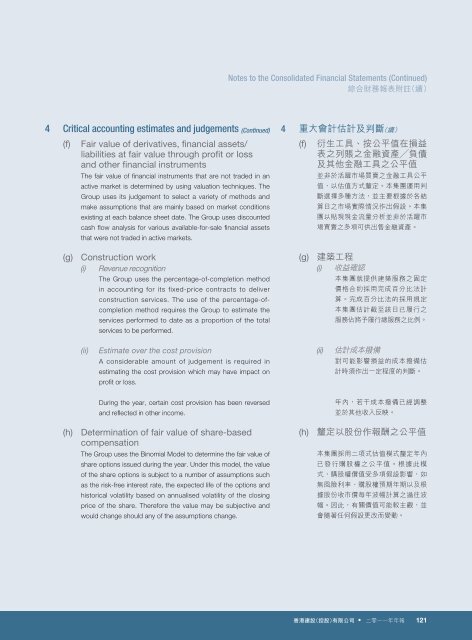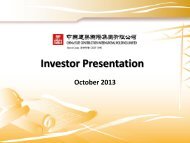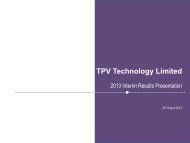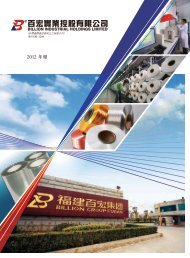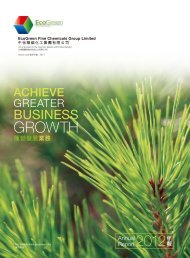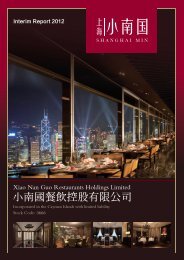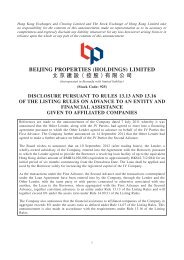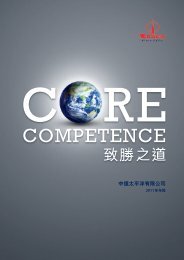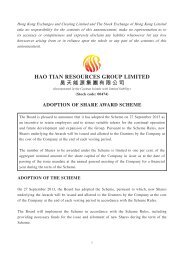Annual Report - QuamIR
Annual Report - QuamIR
Annual Report - QuamIR
Create successful ePaper yourself
Turn your PDF publications into a flip-book with our unique Google optimized e-Paper software.
Notes to the Consolidated Financial Statements (Continued)<br />
<br />
4 Critical accounting estimates and judgements (Continued)<br />
(f) Fair value of derivatives, financial assets/<br />
liabilities at fair value through profit or loss<br />
and other financial instruments<br />
The fair value of financial instruments that are not traded in an<br />
active market is determined by using valuation techniques. The<br />
Group uses its judgement to select a variety of methods and<br />
make assumptions that are mainly based on market conditions<br />
existing at each balance sheet date. The Group uses discounted<br />
cash flow analysis for various available-for-sale financial assets<br />
that were not traded in active markets.<br />
(g) Construction work<br />
(i) Revenue recognition<br />
The Group uses the percentage-of-completion method<br />
in accounting for its fixed-price contracts to deliver<br />
construction services. The use of the percentage-ofcompletion<br />
method requires the Group to estimate the<br />
services performed to date as a proportion of the total<br />
services to be performed.<br />
4 <br />
(f)<br />
<br />
<br />
<br />
<br />
<br />
<br />
<br />
<br />
<br />
(g) <br />
(i) <br />
<br />
<br />
<br />
<br />
<br />
(ii)<br />
Estimate over the cost provision<br />
(ii)<br />
<br />
A considerable amount of judgement is required in<br />
<br />
estimating the cost provision which may have impact on<br />
<br />
profit or loss.<br />
During the year, certain cost provision has been reversed<br />
<br />
and reflected in other income.<br />
<br />
(h) Determination of fair value of share-based<br />
compensation<br />
The Group uses the Binomial Model to determine the fair value of<br />
share options issued during the year. Under this model, the value<br />
of the share options is subject to a number of assumptions such<br />
as the risk-free interest rate, the expected life of the options and<br />
historical volatility based on annualised volatility of the closing<br />
price of the share. Therefore the value may be subjective and<br />
would change should any of the assumptions change.<br />
(h) <br />
<br />
<br />
<br />
<br />
<br />
<br />
<br />
•<br />
121


